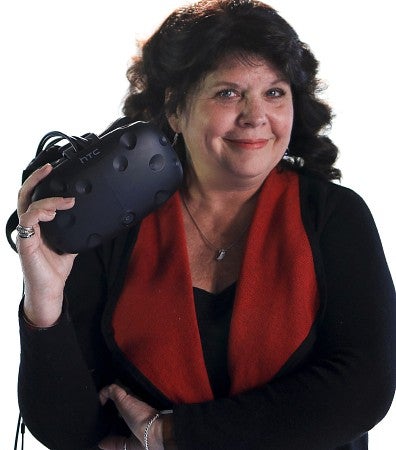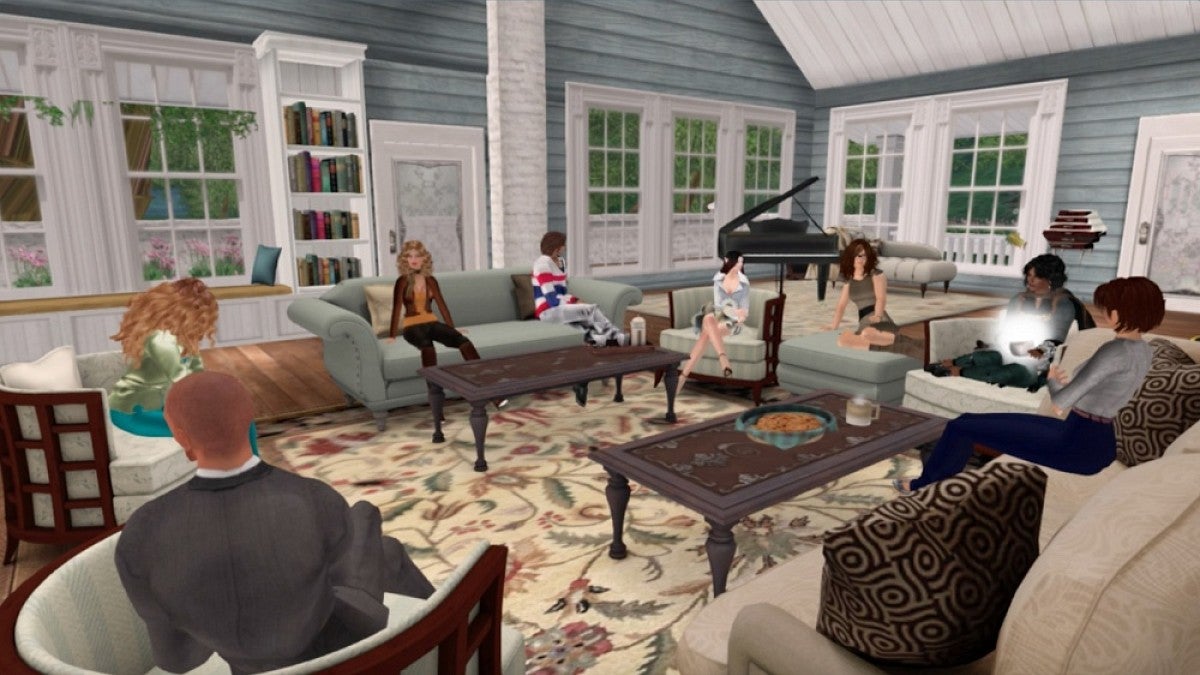Virtual worlds let us do things that are otherwise impossible. On platforms like Second Life, we can take on new identities, defy the laws of biology and physics, and push social boundaries with little to no consequence.
But do these virtual experiences have any effect on our real lives? That’s the question Donna Davis and Tom Boellstorff wanted to answer with a National Science Foundation-funded study.

Take, for example, Fran, a 91-year-old woman with Parkinson’s disease. After watching her avatar dance and perform tai chi in Second Life, Fran was able to stand without the assistance of her lift chair.
“Balance is a common problem for people with Parkinson’s,” Davis said. “But as Fran was watching herself do tai chi, she convinced herself she could do what her avatar could do. For example, although previously she could not step off a curb without assistance, she found the confidence to try it with success. We’re still not sure if that was an effect of muscle memory, a neurological effect or purely psychological, but it certainly warrants further study.”
Davis told the story of Fran and other members of the Second Life disability community at the inaugural UO Wings Presidential Speaker Series. She admitted it’s been difficult to get people to see the connection between virtual world research and real communication outcomes. But her work has revealed a clear link: Virtual worlds and the avatars people use to inhabit them greatly affect how they interpret and express their own — and others’ — visual identities.
In virtual spaces, Davis said, “People don't see how tired you are. They don't see your tremor. For some, that body language may be deceptive and not what they are trying to express. Being embodied in a space where they felt like they looked —healthy and young — and they weren’t passing judgment on each other, it leveled the playing field.”
The virtual disability support group has also helped its members develop strong social networks and interpersonal relationships. It has even created employment opportunities.
“One example is a woman diagnosed with early-onset Parkinson’s who was forced to retire from her career in fashion design,” Davis said. “In the virtual world, she learned how to design clothes for roleplaying and themed environments. She now earns an income selling those clothes on the virtual marketplace.”
Davis stumbled onto virtual worlds 10 years ago while pursuing her doctorate at the University of Florida. After taking a graduate seminar in the then-cutting-edge technology, she changed the focus of her dissertation to the relationships that form in virtual worlds. How real are they if they're only online? How do they affect the way we think about relationships in the physical world?
“That relationship perspective of virtual reality is the piece that has driven my research agenda all the way through,” she said.
Although virtual spaces offer advantages in communication and community building, Davis acknowledges that the technology still has a long way to go in granting accessibility to all. Headsets, for example, are often too heavy and can create motion sickness in some people.
"Being embodied in a space where they felt like they looked — healthy and young — ... it leveled the playing field."
—Donna Davis, School of Journalism and CommunicationEven tasks as seemingly simple as sending and receiving text or voice communication can be problematic.
“Thinking about accessibility from the perspective of ‘how can everybody be included?’ means you're creating really smart technology that's good for everybody,” Davis said, “not just people with a certain ability or disability.”
Now that the National Science Foundation-funded study is complete, Davis is pivoting her research to focus on emerging opportunities in virtual reality as well as the ethics of VR technology and experience.
“We can't replace physical relationships with virtual-world ones, or we'll fail each other,” she said. “The physical world will die. These are important, long-term, critical issues that affect the way we think about each other and the environments we're in.”
Davis will delve deeper into this new area this fall, when the School of Journalism and Communication begins development on a new virtual reality lab at UO Portland. The school has already built two smaller VR and 360-degree video studio spaces in Portland, where students in the multimedia journalism master’s program are learning how to shoot and edit 360-degree video and use photogrammetry to convert physical spaces into virtual representations.
Although she’s expanding her research, Davis has no intention of abandoning the communities she formed in Second Life.
“If you want to say that these aren’t ‘real worlds,’ I would beg to differ,” Davis said during her Wings talk. “These are real friendships. We are like family now.”
—By Jeff Collet, School of Journalism and Communication


